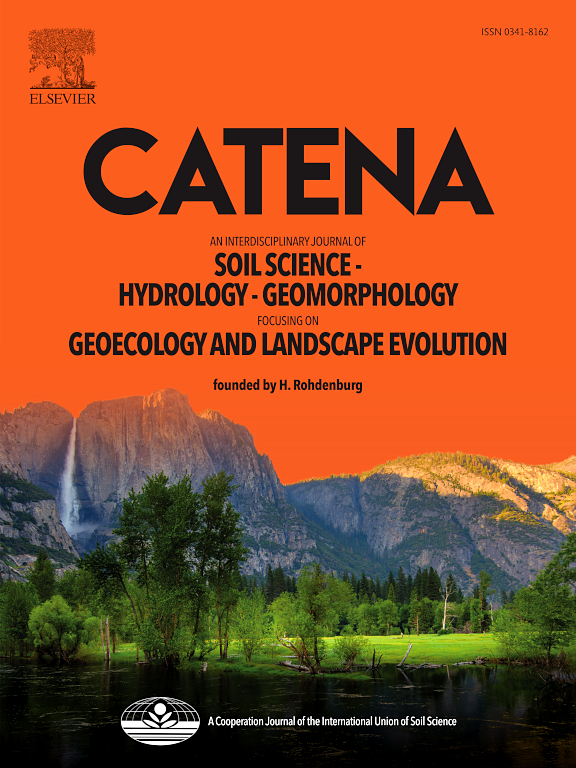Landslide utilization and driving mechanisms in alpine gorge areas of the eastern Qinghai–Tibet Plateau
IF 5.4
1区 农林科学
Q1 GEOSCIENCES, MULTIDISCIPLINARY
引用次数: 0
Abstract
The rapid terrain change zone along the eastern margin of the Qinghai–Tibet Plateau is among the most densely developed and hazardous regions for landslides globally. However, compared with the causes and spatial distribution of landslides, the extensive utilization of landslide bodies by humans in this area has received limited attention. Considering that strong earthquakes, extreme weather events, and extensive human activities can trigger landslide reactivation and catastrophic failure, revealing the utilization patterns, processes, and potential driving factors associated with landslides is crucial. This study utilizes the historical landslide database of the Bailong River Basin, comprising 6,609 landslides, alongside high-resolution human activity data. The results revealed that 569 landslides were used for settlements, 1,159 for road construction, and 2,269 for agricultural purposes. Overall, 49 % of landslides have been utilized, covering 23 % of the total landslide area. Considering the high reactivation risk and significant utilization costs of landslides, our findings suggest that the human use of landslide-affected areas is predominantly passive adaptation, which reflects the intrinsic connection between geological environments and human activities. In areas with frequent debris flows, the utilization rate of landslides reaches 54 %, which is significantly higher than 19 % reported in zones with low debris flow frequencies. Additionally, a positive linear correlation exists between the degree of urbanization and landslide utilization. Comparative analyses of utilized and unutilized landslides indicate that usability is significantly influenced by landslide type, size, morphology, altitude, slope, and formation time. Finally, we propose a conceptual model based on the regional context, highlighting the impact of debris flow-dominated geomorphic processes controlled by the synergistic effects of fault structures and the dry–hot valley climate, and urbanization on the distribution of human settlements. This study underscores the intricate interaction between human activities and geological environments, offering essential insights for future landslide risk management and mitigation strategies.
求助全文
约1分钟内获得全文
求助全文
来源期刊

Catena
环境科学-地球科学综合
CiteScore
10.50
自引率
9.70%
发文量
816
审稿时长
54 days
期刊介绍:
Catena publishes papers describing original field and laboratory investigations and reviews on geoecology and landscape evolution with emphasis on interdisciplinary aspects of soil science, hydrology and geomorphology. It aims to disseminate new knowledge and foster better understanding of the physical environment, of evolutionary sequences that have resulted in past and current landscapes, and of the natural processes that are likely to determine the fate of our terrestrial environment.
Papers within any one of the above topics are welcome provided they are of sufficiently wide interest and relevance.
 求助内容:
求助内容: 应助结果提醒方式:
应助结果提醒方式:


